Diamonds 101
You may have done some research in your quest to find the perfect diamond, and that journey led you here, to us. We are glad it did, because we want you to find the perfect diamond, too.
So, let’s start with diamond basics…
Cut
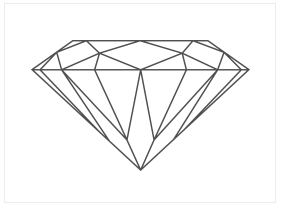
Cut
Color
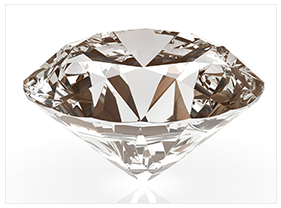
Color
White diamonds are not all colorless. The spectrum ranges from totally colorless to light yellow. A lettering system from D to Z is used to identify the amount of color present in each diamond, with D awarded only to the rarest, totally colorless diamonds. Diamonds graded D, E or F are considered colorless. Diamonds graded G, H, I or J are considered near colorless. The color will intensify further down the scale. The more colorless a diamond, the more rare it is, therefore, more valuable.
Colorless

Near Colorless
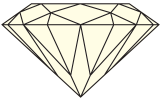
Faint Yellow
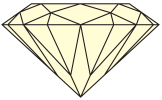
Very Light Yellow
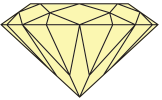
Light Yellow
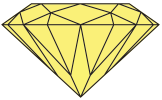
Clarity
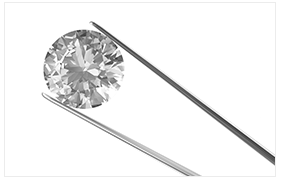
Clarity
Natural diamonds are formed by tremendous heat and pressure deep within the earth. This process can result in “inclusions” and “blemishes.” These are simply fancy words for imperfections either in, or on, the diamond.
No diamond is perfect, but the closer it comes to being flawless the higher its value. Minor inclusions seldom affect a diamond’s beauty, although if heavily flawed, it will affect the price.
Internally Flawless

Very Very Slight Inclusions

Very Slight Inclusions

Slight Inclusions

Imperfect

Carat Weight
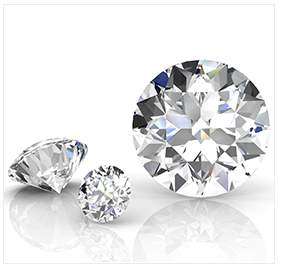
Carat Weight
Carat weight refers to size and weight of the diamond. Larger diamonds are more scarce than smaller diamonds, and therefore, more valuable. However, two diamonds with the same carat weight, can vary greatly in price depending on the color, clarity and most importantly, cut.
A smaller diamond with excellent color and clarity may cost more than a larger diamond with lower color and clarity.
It is simply a matter of deciding what matters most to you, size or quality. It is wise to find the best combination of size, color and clarity to suit your budget.
THE SHAPE
The shape you choose for a center diamond will have an impact on how a ring looks.
Most center diamonds come in one of these shapes:

Round Brilliant
The most popular; cut for maximum brilliance

Princess Cut
A popular fancy-cut diamond, square or rectangle in shape, has a great deal of sparkle

Oval
A modified brilliant-cut with similar fire; It’s elongated shape creates the illusion of greater size

Cushion
A square cut with rounded corners, much like a pillow

Asscher Cut
An elegant square shape with blocked corners that make the diamond appear octagonal

Emerald
Rectangular with parallel facets and blocked corners; produces a hall-of-mirrors effect

Marquise
An elongated shape tapering to a point at both ends
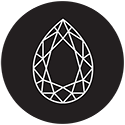
Pear
Teardrop-shaped, with a great deal of sparkle

Radiant Cut
Combines the shape of the emerald cut with the sparkle of the round brilliant; typically, with blocked corners

Heart
A sentimental cut that is unique but a bit harder to find
FANCY COLORED DIAMONDS
Since being discovered centuries ago, diamonds were assumed to be primarily white in color. Only one in 10,000 diamonds is a color other than white. They are called “fancy” and occur in shades of blue, red, green, brown, yellow or pink. Fancy natural colored diamonds are graded on a scale from light to vivid, based on its hue and intensity.
Lab Grown Diamonds
Chances are you have heard just enough about lab grown diamonds to be curious. Before you decide if they are right for you, consider the following:
What You Need to Know.
Lab grown diamonds have generated plenty of interest and nearly as much confusion. They are known by many names including engineered diamonds, cultured diamonds, man-made diamonds, even evolved diamonds. Whatever you call them, the facts remain the same.
The Differences Between the Two.
A laboratory grown diamond has the same optical, chemical and physical properties as a traditional mined diamond. It has the same chemical composition, refractive index, and grading. To many, it is difficult to distinguish the difference. The biggest difference between a lab grown diamond and a mined diamond is how it originates. Lab grown diamonds are grown in a laboratory. Traditional mined diamonds are formed by natural processes under the earth’s mantle. Lab diamonds are grown from the tiny carbon seeds from pre-existing diamond using advanced technology, either extreme pressure and heat or a special deposition process. At Alexander J. Bongiorno, Creative Jeweler, we feel the best way to see the difference between a traditional mined diamond and a lab grown diamond is to compare them side by side. Let us show you.
Lab Grown Diamonds Are Not “Simulated” Diamonds.
Simulated diamonds are meant to resemble mined diamonds, but they are not diamonds in any sense of the word. They can be anything from Moissanite to cubic zirconia (CZ), white sapphire and similar materials which do not have the same physical and optical properties as diamonds.
How Are Diamonds Grown?
Lab grown diamonds are created or “grown” by recreating the same conditions that form mined diamonds, but in a highly controlled laboratory instead of beneath the earth’s mantle.
How to Make Your Decision
Consider the Pros
Eco-Friendly and Sustainable
Lab-created diamonds are considered by many as sustainable diamonds. They have a confirmed origin and it is suggested there is little environmental impact because they are grown in a laboratory. Natural diamond producers disagree, and it has become a topic of debate. You can read more about it at totalclarity.naturaldiamonds.com. Many consider them conflict-free because they are lab grown. However, every traditional mined diamond sold at Alexander J.Bongiorno, Creative Jeweler, is also conflict-free.
New and Trending
Today’s lab grown diamonds are a new phenomena in the fine jewelry industry. Even though man-made diamonds have been around for a while, the size and quality of today’s lab grown diamonds redefine the category. If you enjoy being a pioneer and first adapter, a lab diamond might be a good choice.
Typically Costs Less
Lab diamonds provide some value when you compare them to a mined diamond of similar quality and size. They are optically identical and can be purchased for less than it would cost for a mined diamond.
Weigh the Cons
Its Special Nature
Natural diamonds are produced by powerful forces beneath the earth’s mantle. It takes thousands of years to form one diamond and not every diamond unearthed is deemed good enough to cut and polish. No two diamonds are the same, and exceptional beauty and size is extremely rare. Every mined diamond is created by chance and its uniqueness adds to its appeal. If you are drawn to the mystery, myth and magic of diamonds, a diamond created in a lab may seem sterile or less meaningful.
Economic Impact
Some people do not realize that today’s diamond mining industry is actually an important part of the economy of many under-developed countries. A conscientiously run mine creates employment, and much needed healthcare for the citizens of poor nations, while raising the standard of living.
Holding Value
Lab grown diamonds are so new, no one knows where the market is going or what they will be worth in the future. That could become an issue if you are looking to sell your lab grown diamond or trade up for a larger one. A mined diamond, on the other hand, will always be more valuable. If you want to trade your mined diamond for a larger stone, you will receive its current value, which can be used towards your upgraded purchase.
To Sum Things Up.
Lab grown diamonds are not for everyone, but it is another option for those purchasing a diamond. At Alexander J. Bongiorno, Creative Jeweler, we are passionate about all things diamonds. We appreciate the unique benefits of both mined and lab grown varieties and we have professionals who can fully explain the differences. The final decision is up to you.

 Address
Address